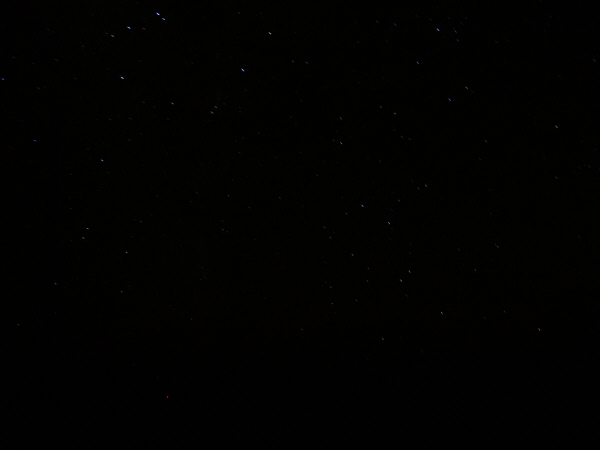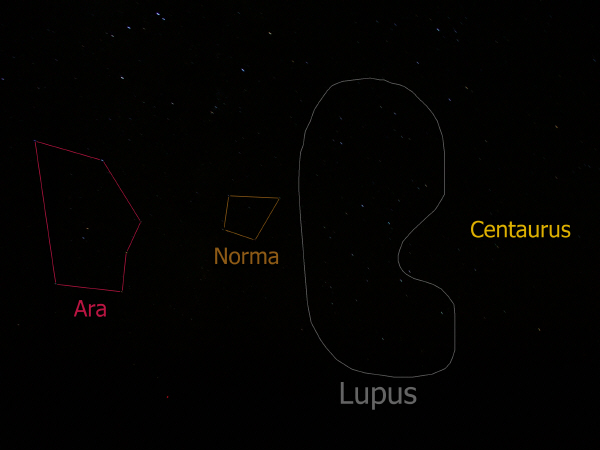| Previous Photo | Next Photo |

NOTE: This next group of photos looks much better if the ambient lighting in the room is dimmer.
One of the unexpected features I discovered with my digital camera was the ability to take pictures of the night sky by exposing for a longer period of time. Pointing the camera was a bit tricky, though, as only the brightest stars showed up on the screen during the aiming process. One side effect I did not notice until afterwards was that even with a one-minute exposure time, the stars move enough to leave short star trails.
Another problem was that the moon was up for most of the night. Before it had risen, I could easily see not just the Milky Way, but also the dust lanes within it. But because of the moon, most of these pictures don't show as many stars as they normally would.
In this one-minute exposure, we see the bottom part of Scorpius (the Scorpion) as well as some southern constellations that we are too far north to see in the contiguous U.S. Most of the right half of this image is Lupus (the Wolf). On the far left, below Scorpius' tail, is Ara (the Altar) - which looks like just a lumpy box with a pair of stars inside. In between Ara and Lupus is Norma (the Carpenter's Square), which is just a miscellaneous collection of dim stars that looks like a "square" only with much artistic license.
Part of Centaurus (the Centaur) is in the shot too. I think the site is far enough south that it would normally be possible to see Alpha Centauri, the 3rd brightest star in the night sky. However, it must've set a little too early. Another time, perhaps.

Here is the same image, with the contrast turned way up for easier viewing:

| Previous Photo | Next Photo |